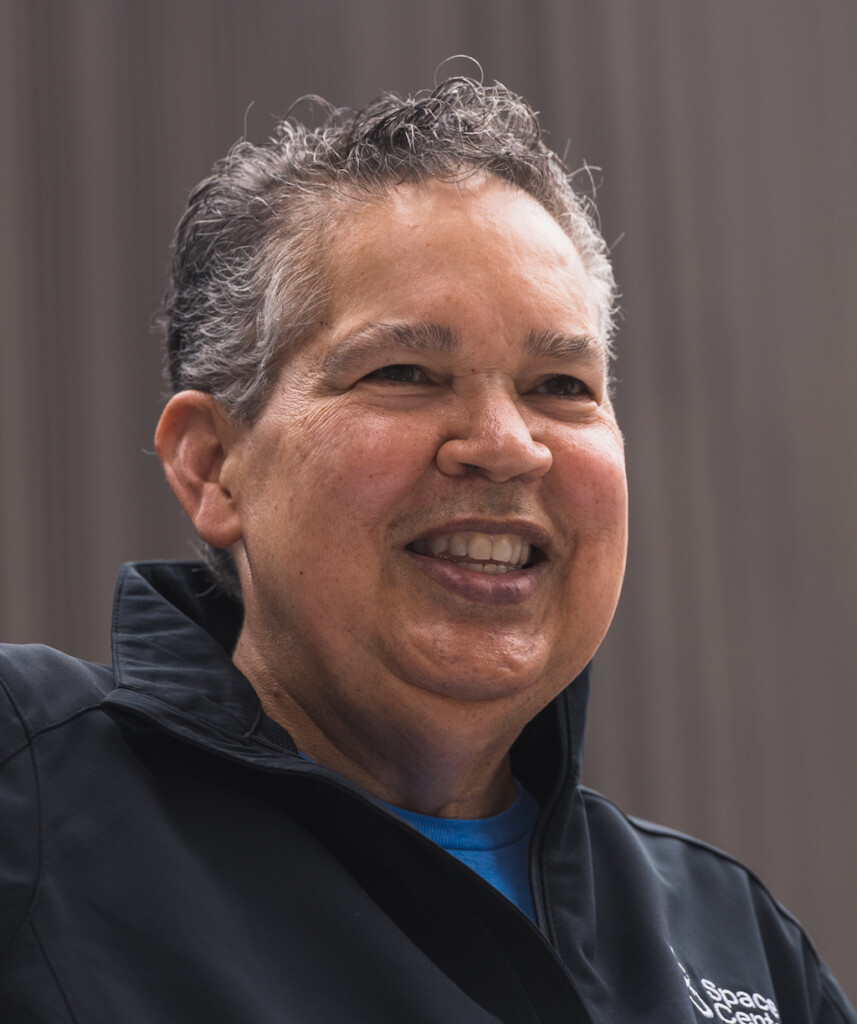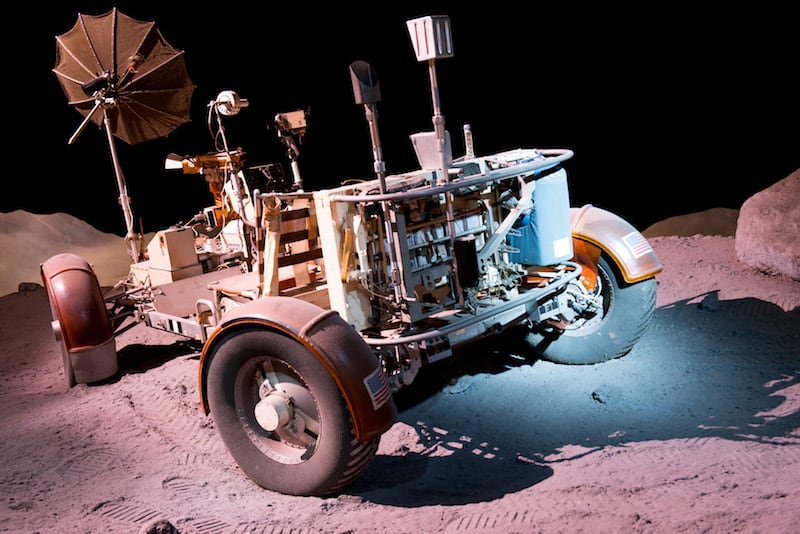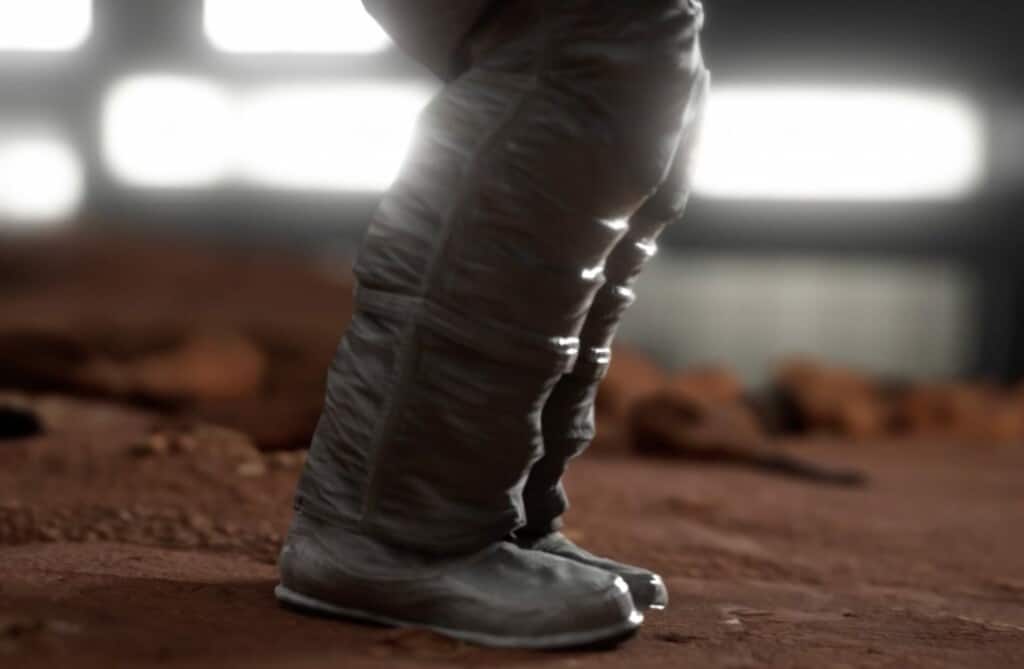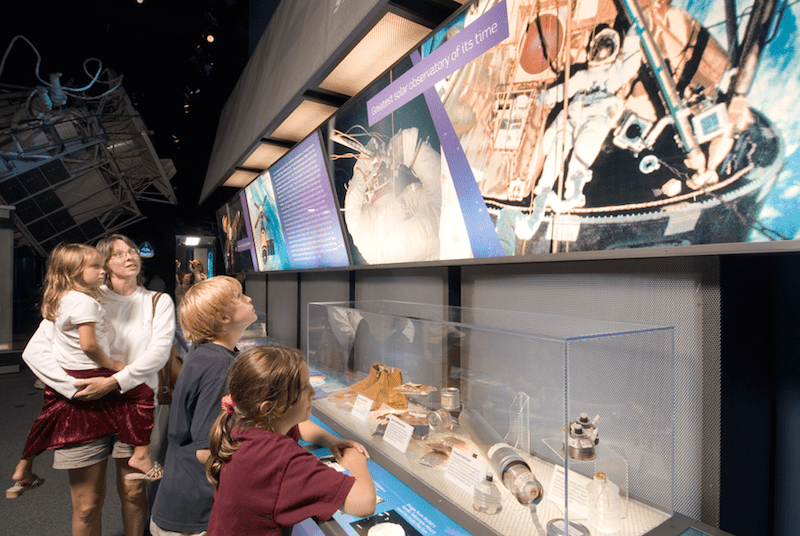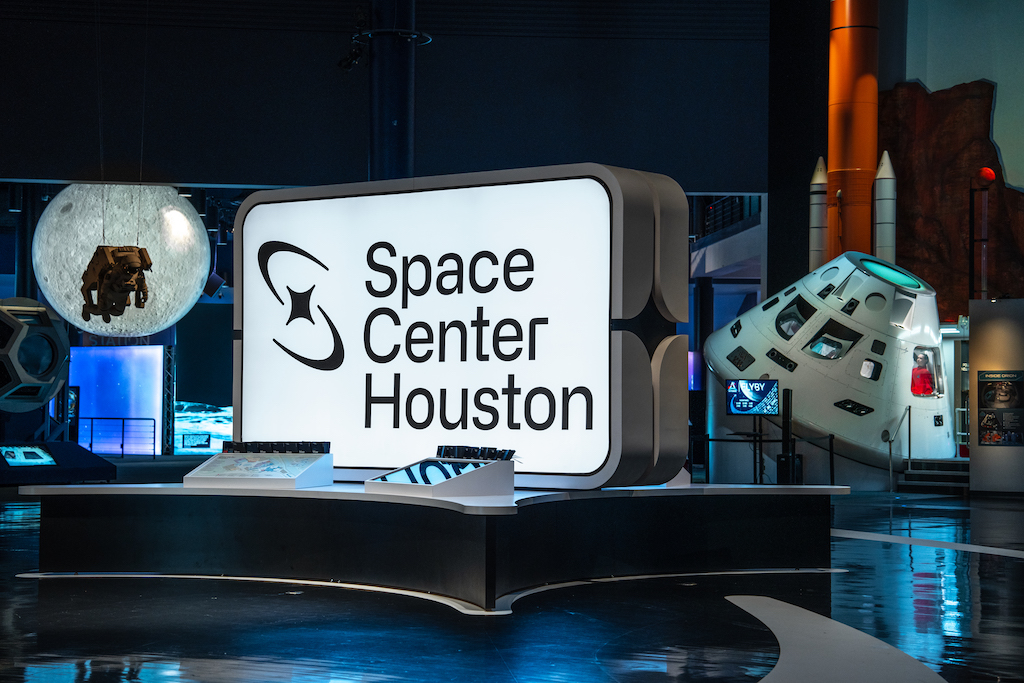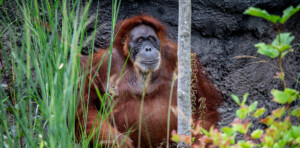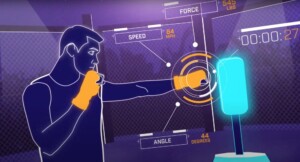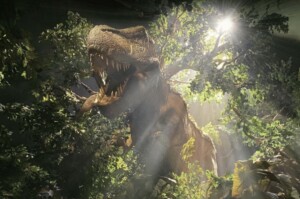Space Center Houston, a Smithsonian Affiliate museum, serves as the official visitor centre of the NASA Johnson Space Center. A leading science and space exploration learning centre, it is one of Houston’s top attractions. It is also the area’s number one attraction for international visitors.
Since it opened to the public in 1992, the immersive attraction has welcomed over 25 million people. It hosts nearly 1.3 million visitors each year in its 250,000-square-foot educational complex.
With over 400 space artefacts, exhibits and experiences related to the past and future of America’s human space-flight program, the centre’s emphasis is placed on science, technology, engineering and mathematics (STEM) in a fun and engaging way. Its goal is to use space exploration to inspire wonder and interest in STEM topics.
A commitment to improving society
President and CEO of Space Center Houston, William Harris, has a background in nonprofit organisations. Speaking to blooloop, he says:
“After college, I served in the Peace Corps, a United States State Department program to assist in developing countries.
“My degrees are in research psychology and health administration. I served for two years in Paraguay in South America; my role there was to be a community developer. I helped the community access potable water, which was a huge issue. The mortality rate of kids under 5 years old was 50% from consuming contaminated water. We succeeded, creating this project in partnership with an initiative with the World Bank.”
Harris’s experiences in the Peace Corps cemented a commitment to public service and to improving society in different ways. He returned to the US and worked at Boston University School of Medicine and the University of California and Los Angeles in various roles to secure resources for programming and supporting students and faculty research.
“Someone I mentored recruited me to work at an institution that was undergoing a metamorphosis: the old California Museum of Science and Industry in Los Angeles. They were reinventing the museum, pivoting it from being a traditional object-based history museum in the sciences to one that was a dynamic learning institution. I was a key member of that team in creating that metamorphosis.”
A new mission at Space Center Houston
In his final years there, NASA retired the space shuttles:
“We prevailed in securing one. One of my projects was helping to bring it to Los Angeles, moving it through 12 miles of the city. I was responsible for raising the resources and doing community outreach engagement around this project. It involved working closely with a team from NASA over a year. They were impressed with all we were doing. Then I was recruited to lead the Space Center Houston, to introduce a similar metamorphosis here.”
Space Center Houston is over 30 years old.
“Like many aerospace museums, it was very driven by objects,” Harris says. “That’s not a bad thing: you get a cool rocket or a spacesuit, and then you build all your content and programming around it. The big pivot we’ve made here is to put the guest at the centre. We think about them saying, ‘What does it mean to me, and how can I be involved?’
“It’s about understanding what goes into human space exploration and finding a way to participate in it. We have become a dynamic STEM learning destination with a space focus, looking at human space exploration past, present, and future.”
The institution also serves as the official visitor centre for NASA Johnson Space Center.
Exhibits and experiences at Space Center Houston
Harris outlines the visitor experience:
“We have about 280,000 square feet of indoor and outdoor exhibits, including flown hardware. We have the Mercury-Redstone, which is the single astronaut capsule.”
The Mercury-Redstone provided NASA with an opportunity to understand the performance aspects of the Mercury spacecraft, the effect of a weightless environment on astronauts, and launch and recovery operations at Kennedy Space Center.
“Then there is Gemini, designed to take two astronauts at a time. We have the Gemini 7 here. We also have Apollo 17, which is the final Apollo capsule that transported astronauts to the moon. So, we give people the context of how the whole space program started as a space race, driven by the fear of Sputnik.”
“That was the catalyst for the world to look at space. Humans have always looked to the stars; the stars have always informed our lives, giving meaning, context, and navigation. Now, we’re actually able to go to them. We’re able to travel into space, which is phenomenal.
“We also have some amazing immersive experiences. NASA Johnson Space Center is the repository for celestial collections. In the Astromaterials labs, they have all the lunar samples from the six missions to the moon. They also have other samples collected from space. We’re fortunate, at Space Center Houston, to have the largest display of lunar samples from Apollo 15, 16 and 17. You can literally touch the moon while you’re here.”
Demystifying space travel
The Space Centre had to be built around one particular exhibit: the trainer for Skylab. The Skylab training module was created out of the final stage of a Saturn V rocket. A habitable spacecraft, it was designed to develop methods of living and working in space for long periods.
“When we were looking at whether humans can live in space, the Soviet Union was the first, with Mir 1, 2 and 3. NASA collaborated on the Mir project, then the United States sent up Skylab through NASA. We had missions of three durations: 30 days, 45 days, and 60 days. You can go inside the trainer that all the astronauts trained in and get a sense of what it was like to live and work inside of Skylab.”
“From the shuttle era, we also have the shuttle carrier aircraft, an adapted Boeing 747 jet. We also have a high-fidelity replica of a space shuttle called Independence that was used as a training vehicle. The shuttle is mounted on the back of the 747, and you can go inside both. It’s an immersive experience so that you understand what it was like to fly in the cockpit of the shuttle, live in the mid-deck, and go inside the cargo bay.
“We are all about demystifying and allowing our guests to experience what was it like to be an astronaut during that era.”
The ISS
Transitioning to the present day, there is a major installation about the current International Space Station.
“The station has been inhabited continually by humans now for nearly 23 years,” Harris says. “We have a major gallery dedicated to the research that happens on the station. It is, essentially, a giant laboratory in low earth orbit.”
There is also a flown SpaceX Falcon Nine Rocket in the collection. Falcon 9, the first orbital class reusable rocket, is a two-stage rocket designed and manufactured by SpaceX for the reliable and safe transport of people and payloads into Earth orbit and beyond.
“SpaceX innovated the reuse of stage one rockets. This one has flown twice. You can get up close to it, and look at the technology.”
Artemis exhibit at Space Center Houston
There is a major exhibit on Artemis, NASA’s current priority:
“Artemis is the twin sister of Apollo. The program has a completely different architecture from Apollo, which was about seeing if we could send humans to the moon, collect some samples, and get back to Earth in one piece, which we did successfully six times.”
The interactive Artemis exhibit highlights NASA’s Artemis program. This will return humans to the Moon for the first time in over 50 years.
“In the Artemis exhibit, we interpret how we’re going to establish a long-term presence on the South Pole. We know that there are billions of gallons of frozen water in the craters of the moon, and mixed in with the regolith, so we plan to establish habitats – which will probably be 3D printed – in the South Pole. There will be astronauts living there for increasing amounts of time, ultimately more than two months.”
Artemis is a proving ground for sending humans to live firstly on the moon and then, ultimately, on Mars.
“We have another exhibit, Mission Mars, which uses current technology and knowledge to explore what it would take to send humans to Mars. It’s an immersive exhibit comparing Mars to Earth because there are misperceptions about the two environments. We have a piece of an asteroid from Mars that was recovered from Antarctica in that exhibit that people can handle. So, you can touch the moon and you can touch Mars when you come here.”
Educational programming
The museum also offers a great deal of programming:
“We have live demonstrations, we have pop-up labs, and we have frequent presentations by astronauts, both current and retired. Something we emphasise is that it takes a village – or a city, really – to pursue space exploration. So, while we’re interpreting it through the role of astronauts, we also focus on how we need accountants and people in marketing and fashion design and food science.”
“When we go into deep space, we’re going to have to grow food. Currently, we freeze-dry most food that goes to space for astronauts. I’m a foodie; I love great food. But it’s even more important to astronauts because it reminds them of home and community. A lot of effort goes into preparing that food and selecting their menu items.
“Now, on the ISS, they are growing more than six varieties of leafy greens. They have grown chilli peppers and a type of tomato, so we’re looking at improving those technologies. In a microgravity environment, things change. Plants, like us, have not evolved to live in that environment. We have to understand how to maximize their growth in that kind of environment.”
Learning at Space Center Houston
Space Center Houston has robust learning programs:
“We are currently at about 1.3 million visitors a year. Around 250,000 of those are youth and educators on field trips or participating in our learning programs. We have a class for four-year-olds in computational thinking, approaching it as a language so that it gives them the fundamental structure to be able to code in any format. For middle and high school students, we do an aspirational five-day immersive experience that we call Space Center University, with different tracks.”
One track concerns living on Mars. He explains:
“On Day One, the students are divided into teams. They’re given a budget and we coach them around how to do planning and strategic forecasting, then they are put through a series of both classroom work and then physical challenges.
“We bring in an astronaut who says to the class, ‘How are you going to keep me alive? Space wants to kill me in so many different ways. These are things you have to think about, and you’re going to be put in some environments so that you understand that.’”
Real NASA facilities
In one experience, participants are taken to an Olympic-sized pool:
“We hire the divers who work with the astronauts in the Neutral Buoyancy Laboratory (NBL) where they train for spacewalks. We teach them how to snorkel and scuba, and, as teams, they have to build structures underwater.”
Participants learn the techniques taught to astronauts as part of their preparation for performing tasks in microgravity. They then construct essential tasks similar to those developed by NASA.
“We put them in an environment that’s unfamiliar to achieve certain tasks, and then we do a debrief around that,” he explains. Another experience involves engineering a robotic rover to meet a given set of parameters involving tasks it must accomplish on Mars, within a budget for supplies. They are given varying real-world criteria to design, construct then test their rovers.
“We take them into real NASA facilities to see where astronauts train, and to look at models of the International Space Station that are used for engineering and planning. They get to see the development of prototype hardware. We have a workshop where they look at the chemistry of rocketry and build rockets. Then we launch them and evaluate their success.
“The week wraps up with the students creating a 3D model of a biosphere that gets juried. We want to reflect real life. It is a fundamental NASA principle around how to develop high-powered teams that can adapt to change and challenge, and embrace adversity.”
Adult education
There is now an adult program, too, called the Human Performance Accelerator Lab:
“We offer some classes for individuals, but most tend to be for groups. The program uses the principles NASA has learned over the past 60 years.”
There are, Harris explains, three pillars that the program focuses on:
“One is having an expeditionary mindset, which means always being open to new information, integrating it into what you’re doing.”
“The next is embracing change and challenge. Sadly, we have become very linear in our thinking: it has to be A to B, B to C, C to D. That’s not life. Having the change mindset means – and this is in part strategic forecasting – that you are looking at all the factors, and assessing how to maximize opportunity, not giving up, embracing adversity and challenge.”
The third pillar is embracing something astronauts experience: the overview effect:
“It’s very well-researched that when astronauts go to space, they look back at Earth, and it changes their mindset. The third pillar is about systems thinking. It’s about getting out of the weeds and looking at how there are a lot of interrelated things, and how you approach those without becoming consumed with the detail.
“Our psychology here is that it is we, as humans, are capable of so much more. We need to develop the muscle, the discipline, to push out those boundaries, and to fulfil greater potential and possibilities.”
Going behind the scenes at NASA Johnson Space Center
Part of the Space Center Houston experience involves taking guests behind the scenes at NASA Johnson Space Center to see working facilities:
“We have access to a NASA research lab. We take you to see the mission operations control room from the Apollo era, which we have completely restored. You experience Apollo 11’s 1969 moon landing, just the way it happened.”
“We also take you to the astronaut training facility, where we have a full-scale model of the International Space Station. This is used to train astronauts and to do planning. There is a robotics area where NASA has for years been developing robots to support human missions. They are now on Robonaut 5 (R5): her name is Valkyrie.”
The importance of space innovation
Commenting on the role of space innovation in addressing some of the challenges facing the planet in terms of sustainability, Harris says:
“It’s a really important part of our messaging and is something NASA is quite focused on as well. In fact, there is a major initiative with earth observation satellites underway to better understand global climate change and other factors affecting the health of our planet.
“This is something they have been doing for many years. It was through the shuttle program that we formed a better understanding of the depletion of ozone. That led to the worldwide agreement to suspend fluorocarbons and aerosols.”
“Forming strategies to keep our planet healthy is a priority. There are now many nations around the world that are very interested in exploration; there are more than 77 government-affiliated space agencies around the world. The main interest of many of these nations is in low earth orbit, looking at how they can better understand their countries.
“In India, for example, they’re looking at issues of sustainability around water, and the optimal times to cultivate food and harvest. Space exploration can help us better understand our planet and manage it. It has helped us understand big climactic conditions like hurricanes and typhoons. We can’t stop them from happening, but we can observe them and understand their phenomena.”
Bringing people together at Space Center Houston
Harris addresses how the facility brings together guests, commercial space partners, global space agencies and NASA:
“Many of the science centres in the United States and around the world have partnerships with commercial companies and government, etc. But we’re taking it to a new level here. We are, if you will, the crossroads of government space agencies like NASA, the private sector, academia, and nonprofit organizations.
“NASA is a secure facility; not everyone can go onto their facilities or into all of their laboratories. So, they hold a lot of their content and programming here. We can bring in guests from all over the world to participate in content and programming. We do an annual festival called Moon to Mars. This helps inform the public about what it is going to take for us to return to the moon, and, ultimately, become an interplanetary species.”
During this week, commercial companies come in and showcase their innovations. Harris adds:
“There is a commercial company called Axiom here in our community. They have a contract with NASA to develop a new spacesuit for walking on the moon. We did the unveiling of that spacesuit. We had the engineers who worked on this, a downlink with astronauts from the Space Station, and 250 kids and young people in the audience because we want to inspire them.
“That’s what we do: we are the convening place to bring together all those communities in a common place.”
Focusing on commonalities
He adds:
“I tell my team that I am unapologetically Kumbaya. I feel that if you can find a higher commonality for people to come together around, it helps diminish the focus on differences. The other thing I think is so important is that we try to mix youth from different nations in our programming.”
He attributes his insights to his Peace Corps experience:
“I feel that familiarity diminishes conflict indifference. Fundamentally, we are all human, and we all aspire towards similar things. We all want to have better lives. We all want to have family, to have friends, and we all want to be inspired. If we can focus on those commonalities, we can build bridges and connections.
“Those are really powerful elements of being human.”
All images kind courtesy of Space Center Houston

